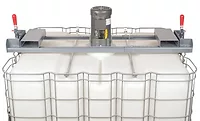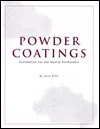New Resins for High-Solids Formulations

VOC regulations remain a top priority for the coating formulators who must be proactive in their efforts to be ready for the future. The effort to comply with ever-changing VOC regulations with no compromise of performance has created challenges for all chemists in the coatings industry. In this effort, resin suppliers are spending more time developing and evaluating new materials before they go to market. While all paint formulators are heading toward reduced VOCs, there are different approaches they can take. These technologies include high-solids coatings, waterborne coatings, powder coatings and other new technologies. Of the various technologies available for compliance, solvent based offers the ‘least risk' approach. This article will focus on the high-solids approach to help the formulator to meet upcoming VOC requirements. In order to help the paint chemist formulate a high-solids coating without sacrificing quality, Eliokem, a leading global specialty chemical supplier, has developed new resins that can be used in high-solids formulations and also has available a team of coating formulators that will help with your coating requirements.
What Are VOCs?
VOC stands for Volatile Organic Compound and includes all non-exempt solvents. In order to decrease the VOCs of paint, it is necessary to remove solvent from the formulation. Thus, increasing the solids can have a major impact on reducing the VOC content of a formulation. Solvent selection is important since a few solvents, e.g., acetone, t-butyl acetate, etc., are classified as exempt. The exempt solvents are not included in the calculation for VOC, which has a major impact on the final VOC of paint. More on the background of VOCs may be found in the literature.1-3National AIM VOC regulations vary from 120 g/L for low-solids wood preservatives to 870 g/L for ornamental lacquers. One of the first steps to achieve the lower VOC levels was to go to waterborne binder systems. In this case, the VOC came from the amines and coalescing aides that were needed to obtain acceptable film characteristics. VOC limits continue to be reduced, requiring the implementation of additional technologies to meet the new lower limits.
Three major organizations are driving VOC restrictions. They are the EPA through the Clean Air Act, the South Coast Air Quality Management District (SCAQMD) and the Ozone Transportation Commission (OTC), with regulations that affect 13 Northeast and Mid-Atlantic states. Also, MRPO/LADCO (Midwest Regional Planning Organization/Lake Michigan Air Directors Consortium) was formed primarily to address haze-causing emissions in Illinois, Indiana, Michigan, Wisconsin and Ohio. This will likely soon result in the implementation of additional regulations.
The most recent change is a series of California-like AIM regulations in New York, New Jersey, Pennsylvania, Delaware, Maryland, the District of Columbia and northern Virginia on January 1st, 2005. These regulations call for VOC content as low as 100 g/L for flat paints and 250 g/L for high-gloss paints. Finally, six of the New England states are also considering regulations similar to California's that could take effect in 2006. Southern California, meanwhile, has enacted regulations that bring solvent levels for architectural paints down to 50 and 100 grams per liter.
As the prior paragraph illustrates, VOC regulations are changing all the time and vary from state to state, thus, highlighting the need to be proactive when formulating coatings for new or current applications.
High-Solids Coatings
High-solids coatings are generally defined as coatings with a solids volume percent greater than 60% and, because of the continually changing VOC targets, some high-solids products are being formulated at 80% or higher. High-solids coatings typically fit into three categories; air-dry coatings, bake coatings and two-component coatings. The following is a list of the typical advantages of high-solids coatings:- reduce solvent use;
- reduce VOC emissions;
- reduce number of applications to achieve desired film thickness;
- reduce environmental problems; and
- reduce odor problems.4-6

Plioway and Pliolite Resins
In formulating high-solids paints, lower-molecular-weight polymers are needed in order to obtain paint viscosities that can be applied by traditional methods. Eliokem recognized this need and developed three new resins:-
Plioway Ultra 350 - a substituted styrene acrylate copolymer resin formulated to dissolve in weak solvents;
Pliolite LV 72 - an ultra-low-viscosity styrene acrylate copolymer; and
Pliolite LV 76 - a low-viscosity, styrene/butyl acrylate copolymer resin.

Features and Benefits of Plioway and Pliolite Resins
Adhesion and Tension-Free Film FormationThe fine particle size of the dissolved Plioway and Pliolite resins enables the wet paint film to penetrate deep into the substrate. Paints based on Plioway and Pliolite resins form tension-free films. Unlike alkyd paints, they do not crosslink (and hence shrink) during the film formation process. These two characteristics give Plioway- and Pliolite-based paints excellent long-term adhesion on difficult surfaces.
Odorless
The high solubility of Plioway resins allows paint formulation in aromatic-free low-odor solvents. Paints have virtually no odor during application and drying. Traditional alkyd paints are formulated with more powerful solvents, and thus have a stronger odor. Moreover, they have a characteristic residual drying oil smell arising from the alkyd resins during the cross-linking reaction. This is not present in paints made with Plioway resins.
Universal Application
Paints based on Plioway and Pliolite resins are alkali resistant and can be directly applied on fresh plaster or cement. Alkalinity enhanced by such substrates would destroy alkyd resin-based paints, because they are susceptible to saponification.
Fast Dry
The film formation of Plioway- and Pliolite-based paints by simple solvent evaporation gives the formulator the ability to produce paints with fast drying rate (even faster with higher-solids, lower-VOC paints). Alkyd-based paints have longer drying times.
Development of 340g/L-VOC
Swimming Pool Paint
Effective coatings for swimming pools must have certain properties to assure adequate protection and good service life. These properties include resistance to water, alkali and chemicals; good exterior durability; and good adhesion to concrete and/or previously painted surfaces.
The Challenge
To reduce VOC levels, solids levels are increased including resin concentration. As resin levels increase, viscosity increases rapidly. Possible solutions are to use resins with lower viscosity profiles and to select formulation ingredients to minimize viscosity such as the use of glass microspheres and/or low oil absorption fillers. As Figure 2 shows, Pliolite LV 72 has been developed with a reduced viscosity profile specifically for use in high-solids formulations.
The Solution
In addition to using the lower-viscosity Pliolite LV 72, small-particle-size glass microspheres were used to obtain relatively high gloss, high PVC and low weight per gallon. Low oil absorption filler (surface treated silica), extender resin (solid chlorinated paraffin) and aliphatic solvents were also used. The results of the evaluation of Pliolite LV 72-based samples versus commercial products are reported in Tables 1 and 2. Table 1 contains the comparison of the wet paint samples as well as application characteristics. Table 2 shows the adhesion characteristics when applied to a previously coated concrete block.Water Immersion
When applied to sand-blasted concrete blocks and immersed in water for six weeks, all the samples appeared acceptable. When applied to etched concrete blocks and immersed in water for one week, all the samples appeared acceptable.Conclusions
Two candidate < 340 g/L formulations were developed: gloss and satin.
Deveopment of a High-Solids,
Low-Odor Stain-Blocking Primer
Since their introduction to the U.S. market in 1997, odorless stain-blocking primers have gained a well-deserved reputation. They are appreciated for their unique combination of highly effective stain blocking traditionally associated with solventborne products as well as with the comfort of application and low odor commonly associated with waterborne products. A good primer has to be able to cope with the wide variety of substrates that may be encountered in an interior situation: drywall, cement, concrete, plaster and spackling, wood, paneling, old paint, metals, fiberboard, etc. Very frequently, particularly in renovation work, the surfaces encountered will be stained with a whole host of stains such as water-soluble stains from water leaks, smoke, nicotine, inks, etc. as well as solvent-soluble stains such as tar, inks, graffiti, etc.The Challenge
Some states are in the process of introducing tougher legislation where the VOC limit is set to decrease to 350 g/L from the current 450 g/L limit, posing a tough challenge to manufacturers and resin suppliers. In order to decrease the VOC of paint, it is necessary to remove solvent from the formulation. This has the effect of increasing proportionally the relative amounts of solids (pigment + binder) in the formulation, both of which have a negative effect on viscosity. Increasing resin content primarily increases high-shear viscosity, important for sprayability, and increasing pigment content primarily affects low- and medium-shear viscosity, important for flow and leveling and sag resistance. The use of isoparaffinic solvents, which have very weak solvent power, enable blocking of the majority of stains. This includes some solvent-soluble stains that are not soluble in weak isoparaffinic solvents. Resins with lower viscosity profiles and excellent solubility in low-odor, isoparaffinic solvents are needed. Plioway Ultra 350 has been developed to have a reduced viscosity profile and excellent solubility characteristics in isoparaffinic solvent.
The Solution
Plioway Ultra 350 was used with Isopar G as the solvent. The fillers used were the ones commonly used in commercial stain-blocking primers and consisted of blends of large- and small-particle-size calcium carbonates that give optimized particle packing. Based on previous experience, a blend of approximately 4:1 of a 12-µm-particle-size CaCO3 and a 3-µm-particle-size CaCO3 was used. The use of a large-particle-size CaCO3 that contains relatively few fines also has a big impact on oil absorption, and thus on viscosity. The wetting agent was selected based on suppliers' recommendation for use in low-polarity solvents such as Isopar G. Table 3 benchmarks a commercial stain-blocking primer compared to a new high-solids formulation based on Plioway Ultra 350.Conclusions
A stain-blocking formulation has been developed that meets all of the following criteria: 350g/L VOC compliant, odorless, sprayable through typical airless spray equipment available to contractors, good adhesion to drywall and has excellent stain-blocking properties.Summary
The case studies presented show that Pliolite and Plioway resins provide the viscosity profiles needed to formulate high-solids coatings that compare favorably with commercial products containing higher VOC levels. Furthermore, Plioway has been specifically formulated to be soluble in odorless solvent systems, which is an important factor for indoor applications.
Plioway and Pliolite resin technology is continuously being developed to bring new products and applications to the market and also to accommodate changes in market requirements such as those brought about by local or national legislation. Eliokem is prepared to be a partner in meeting future challenges in the coatings industry.
References
1 Godshalk, H.W., et al. "The Evolution of Coatings with Low Levels of Volatile Organic Compounds: Where the Industry Stands in its Quest for Zero VOC", - http://www.thefabricator.com/Articles/Fabricating_Article.cfm?ID=404.2 "Paint and the Environment" - http://www.cdnpaint. org/enviro3autorefinish_e.html.
3 "Federal Register", Vol. 63, No. 176.
4 "Metal Paint & Coating Operations" - http://www.p2pays.org/ref/01/00777/alternat.html.
5 "A Guide to VOC Reduction in Decorative Coatings", prepared by CEPE.
6 Centofante, D.A. "High-Solids Coatings", http://www. pfonline.com/articles/pfd0007.html.
Looking for a reprint of this article?
From high-res PDFs to custom plaques, order your copy today!






